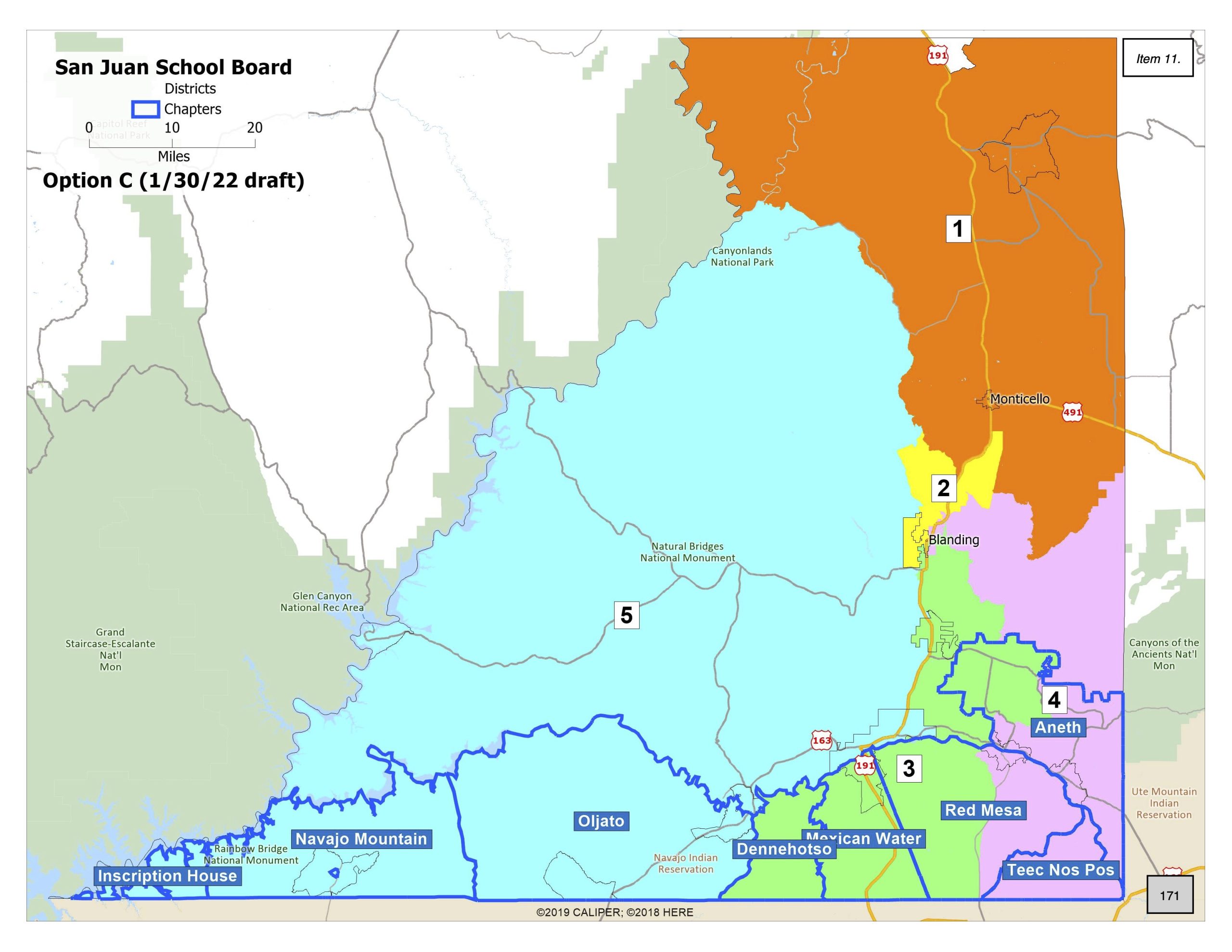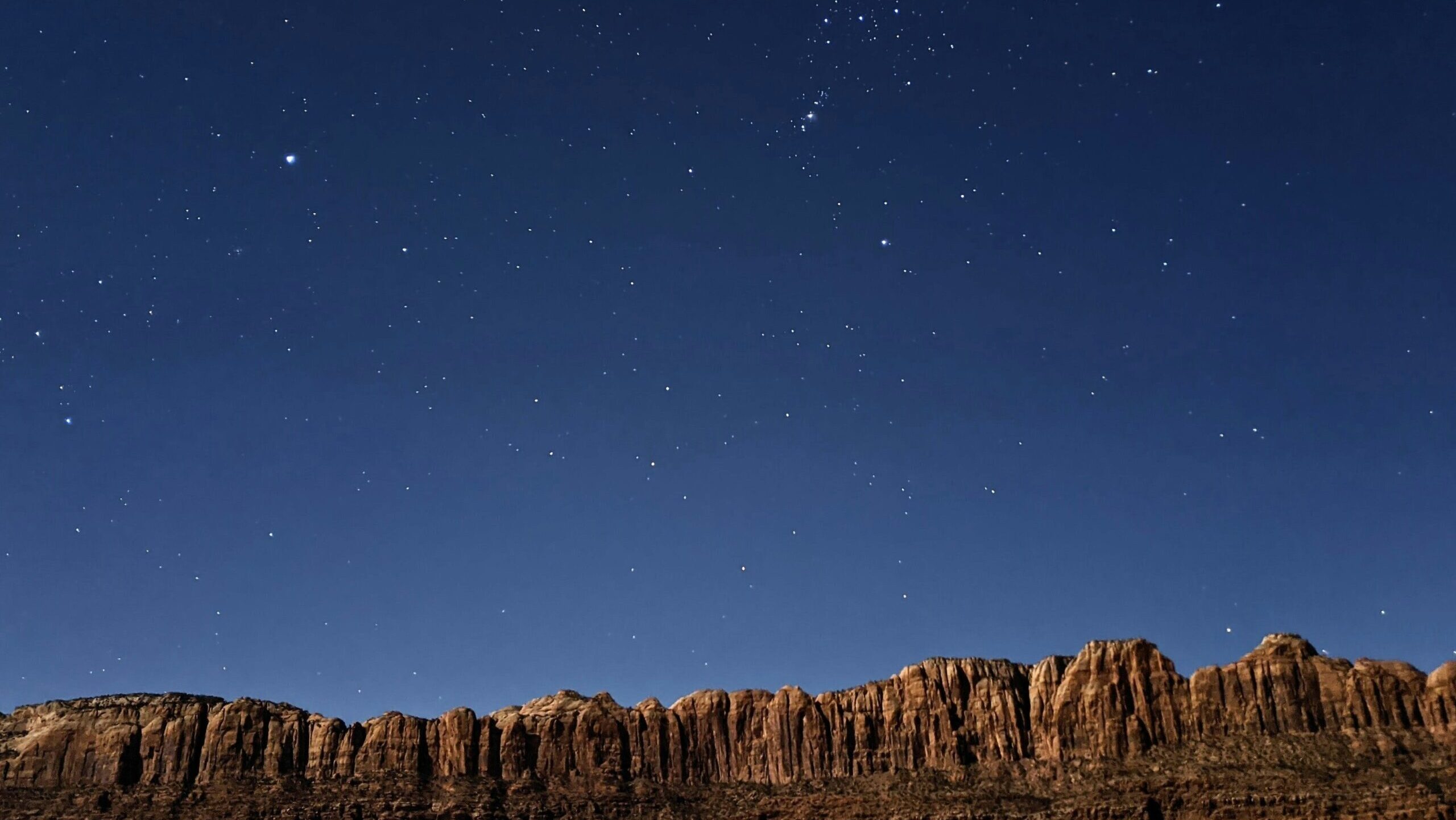Some information may be outdated.
Some San Juan County residents may raise their eyebrows at the school board ballot later this year, following a tumultuous redistricting saga.
The redistricting process was riddled with conflict over geographic representation and Indigenous voting power. The process, undertaken in the wake of both recent and longstanding legal challenges to the county’s voting districts, left many officials unsatisfied with the opportunities for public input into the maps.
The San Juan County Commission alternately approved and replaced maps created by the Navajo Nation Human Rights Commission and maps from San Juan County consultant William Cooper over the past few months. Cooper, an attorney who previously testified in the Navajo Nation’s redistricting lawsuit against San Juan County, was hired to assess 2020 Census data for San Juan County and redraw election district maps for both the county commission and the school board.
The process started with the approval of a map created by the Human Rights Commission on Dec. 21 and ended with the approval of an adjusted version of that map called “Eastland Adjustment” on Jan. 18.
Concerns over how to ensure proper representation drove the back-and-forth.
After the Jan. 18. approval, the school board and some members of the public pushed to rescind the map and go back to one drawn by Cooper, largely based on the belief that two incumbent school board members would be moved to District 4.
Ron Nielson, superintendent of San Juan School District, released a video with the impression that two board members would be redistricted into District 4 asking viewers to send comments to the commission. The video focused on incumbent candidates, constitutional legality, feeder systems, and whether local input was considered. 38 written comments were submitted, all opposing the map created by the human rights commission. Many of the comments cited poor geographic representation of Montezuma Creek as the reason for opposing the map. In the final accepted map, only one currently serving board member was redistricted.
By the time the Feb. 1 commission meeting was held, a compromise option was on the table. That map, also drawn by Cooper, was described as a “win-win” by County Administrator Mack McDonald but the introduction of yet another draft plan was met with frustration.
“I don’t know why the county continues to take our plan to the consultant,” Lauren Bernally, policy analyst for the NNHRC, commented.
“I really don’t see why we have all this smokescreen covering all we’re doing,” Commissioner Maryboy at the meeting. “I don’t know why our administrator has not even sent that to the state yet…Somebody somewhere is sleeping at the wheel and not doing his job.”
While Commissioner Bruce Adams made a motion to approve this option, it failed to receive a second.
By this time, the county had long passed the Jan. 31 deadline to submit maps to the state. In an interview, McDonald said that the deadline was a ‘soft’ one.
“There’s nothing legally…that shows that date,” he said.
“We’ve been in communication with the state the whole entire time,” McDonald said. “We weren’t going to give them a map where there were still questions.”
Public noticing issues
Criticism of perceived inadequate public involvement was heard at almost every step and from every side of the redistricting saga.
A resolution from the Navajo Nation Human Rights Commission opposing “Plan B Modified” stated that it “was never put out for public comments.”
The video by the school superintendent indicated that another map was not “drawn with local input considered.”
“We did not get any public input with respect to the ordinance that’s before us,” said Bernally at the Feb. 1 commission meeting.
San Juan County Attorney Kendall Laws sent a letter to the commission ahead of the Jan. 18 meeting expressing dismay at his discovery that commissioners Maryboy and Grayeyes received an email with one of the ordinances attached and language indicating that they had agreed to add it to the Jan. 18 agenda. In Laws’ view, this communication would violate the Utah Open Meetings Act.
Despite Laws’ warning that the action would be “void,” the commission approved the map.
“We never usually have our attorneys around or available at the times when we have a meeting but they seem to be available now,” said Maryboy, who joined Greyeyes in approving the adjustment. Commissioner Bruce Adams voted nay. Laws resigned from his position on March 26, having taken a role at the Utah Public Lands Policy Coordination Office.
A bill sponsored by Utah Rep. Phil Lyman, a former San Juan County commissioner, would have made any member of a public body “who knowingly or intentionally excludes from an open meeting a member of the public who has a right to attend the open meeting” guilty of a Class C misdemeanor. The bill was rejected by the Utah House of Representatives on March 4.
The San Juan County Commission issued a statement of opposition to the bill on March 1, stating that the bill “appears to be in response to the San Juan County Attorney’s memo…”
Geographic representation vs. voting bloc power
The Navajo Nation Human Rights Commission focused on the Native American Voting Age Population in determining how to ensure proper representation for the county’s significant Indigenous population.
Leonard Gorman, executive director of the NNHRC, explained that Native Americans need more than a simple majority to affect an election. Though the number of voting-age people in an area may be high, barriers like limited electrical and water infrastructure, poor internet connectivity, and large distances can prevent someone from exercising their vote.
“We’ve come to, I think, a plateau in regards to the definition of what is the percentage of Native Americans in a particular district that can elect a candidate of their choice,” said Gorman. “For Native Americans, we’ve demonstrated it to be at the minimum 62%, which is well above the 51% majority.”
In interviews, Superintendent Nielson expressed some resignation after the long process.
“We would have liked to have seen the communities more intact,” Nielson said. “We’ll continue to just move forward and work with our school board as the public chooses to vote them in.”
In January 2023, Lucille Cody, who represents District 4 including the Montezuma Creek and Aneth areas, will come to the end of her term, but there will be no election for District 4. Instead, Steven Black, currently representing District 3, will take over representation of District 4 for his remaining two years in office. Utah State Code guides this process following redistricting.
Sheila Knight of Blanding and Colleen Benally of Bluff declared candidacy for school board District 3. Nelson Yellowman declared his candidacy for District 5. Lori Maughan of District 1, Merri Shumway of District 2, and Steven Black moving to District 4 all have two more years in office.
Appreciate the coverage? Help keep local news alive.
Chip in to support the Moab Sun News.





